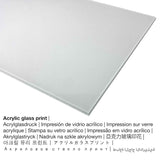Rembrandt van Rijn, 1635 - Man in Oriental Costume - fine art print
Tax included. Shipping calculated at checkout.
Specifications of the article
This more than 380 year old piece of art called Man in Oriental Costume was painted by Rembrandt van Rijn. The original measures the size 98,5 x 74,5 cm (38 3/4 x 29 5/16 in) and was painted with the technique of oil on canvas. This piece of art is included in the National Gallery of Art's digital art collection, which is located in Washington D.C., United States of America. With courtesy of - National Gallery of Art, Washington (public domain).: . Moreover, alignment of the digital reproduction is portrait with an image ratio of 3 : 4, which means that the length is 25% shorter than the width. The painter Rembrandt van Rijn was a European artist, whose artistic style was primarily Baroque. The Baroque artist lived for 63 years, born in the year 1606 in Leiden and deceased in 1669.
Additional information on the original artwork by the museum's website (© Copyright - National Gallery of Art - www.nga.gov)
After learning the fundamentals of drawing and painting in his native Leiden, Rembrandt van Rijn went to Amsterdam in 1624 to study for six months with Pieter Lastman (1583–1633), a famous history painter. Upon completion of his training Rembrandt returned to Leiden. Around 1632 he moved to Amsterdam, quickly establishing himself as the town’s leading artist, specializing in history paintings and portraiture. He received many commissions and attracted a number of students who came to learn his method of painting.
In this imposing half-length image, a bearded man wearing an elaborate, bejeweled turban stares out at the viewer, his features strongly modeled by light streaming in from the left. A fur-lined cape, loosely clasped at the neck with a gold chain, covers his shoulders. His right hand grasps the sash that wraps around his waist, while his other hand rests on a wooden staff. An aigrette, a type of pin with a tuft of ornamental bird feathers that was a standard part of Ottoman attire, secures a heavy gold chain on the man’s turban.
Rembrandt, as a history painter, was particularly intrigued by the Middle East, where so many of the Biblical stories he frequently depicted had taken place. Rembrandt’s paintings, drawings, and etchings of the 1630s included numerous figures who wear Middle-Eastern garb. By the early seventeenth century the commercial enterprises of Dutch merchants had reached the Middle East, so exotically dressed foreigners were a familiar sight in the streets and marketplaces of Amsterdam. Exotic attire became a fashion fad, and Dutch men, including Rembrandt himself, would sometimes be portrayed wearing similar outfits. At the same time, Dutch collectors avidly sought to acquire exotica from all parts of the world, including shells, swords, musical instruments, and costumes, which they would then display for visitors to admire. Rembrandt owned such a collection, known as a kunstkamer, or cabinet of curiosities. His encyclopedic holdings of art and artifacts served as props for Rembrandt and his students, but the artist was also motivated to amass such a collection by his desire to be recognized as a full-fledged member of the class of gentlemen-collectors.
Structured artwork information
| Title of the piece of art: | "Man in Oriental Costume" |
| Artwork classification: | painting |
| General term: | classic art |
| Artwork century: | 17th century |
| Created in: | 1635 |
| Approximate age of artwork: | 380 years |
| Original medium of artwork: | oil on canvas |
| Size of the original artwork: | 98,5 x 74,5 cm (38 3/4 x 29 5/16 in) |
| Museum: | National Gallery of Art |
| Location of the museum: | Washington D.C., United States of America |
| Website: | www.nga.gov |
| License type: | public domain |
| Courtesy of: | National Gallery of Art, Washington |
Structured artist information
| Name of the artist: | Rembrandt van Rijn |
| Gender: | male |
| Nationality: | Dutch |
| Professions of the artist: | painter |
| Country of the artist: | the Netherlands |
| Classification: | old master |
| Styles: | Baroque |
| Died at the age of: | 63 years |
| Year of birth: | 1606 |
| Place of birth: | Leiden |
| Year of death: | 1669 |
| Died in (place): | Amsterdam |
Select a item material option
In the product dropdown lists you can pick your individual size and material. Pick your preferred material and size between the subsequent alternatives:
- Printed poster (canvas material): A poster is a printed flat canvas paper with a slight structure on the surface, that resembles the original artwork. The poster print is designed for framing your art copy using a custom-made frame. Please note, that depending on the size of the canvas poster print we add a white margin 2-6cm around the painting to facilitate the framing with a custom frame.
- Aluminium dibond print: An Aluminium Dibond print is a material with an outstanding depth effect. Its non-reflective surface structure creates a modern look. The white & bright parts of the artpiece shine with a silky gloss but without glare.
- Acrylic glass print: A glossy print on acrylic glass, often referenced as a UV print on plexiglass, will change your favorite original work of art into stunning décor. Additionally, the acrylic art print forms a good alternative to dibond and canvas art prints. The work of art is custom-made thanks to modern UV printing technology. The great upside of a plexiglass print is that contrasts and smaller details will be recognizeable due to the very fine tonal gradation of the print. Our real glass coating protects your custom art replica against light and heat for between 4 and six decades.
- Canvas print: A printed canvas material stretched on a wood frame. Hanging your canvas print: Canvas Prints have the advantage of being low in weight, which means that it is easy and straightforward to hang up the Canvas print without extra wall-mounts. Therefore, canvas prints are suitable for any kind of wall.
Structured item details
| Article type: | art reproduction |
| Reproduction method: | reproduction in digital format |
| Manufacturing process: | UV direct printing (digital print) |
| Production: | German-made |
| Stock type: | on demand production |
| Proposed product use: | home décor, wall art |
| Orientation: | portrait format |
| Aspect ratio: | length : width - 3 : 4 |
| Meaning: | the length is 25% shorter than the width |
| Available variants: | canvas print, poster print (canvas paper), acrylic glass print (with real glass coating), metal print (aluminium dibond) |
| Canvas print (canvas on stretcher frame) variants: | 30x40cm - 12x16", 60x80cm - 24x31", 90x120cm - 35x47", 120x160cm - 47x63" |
| Acrylic glass print (with real glass coating) sizes: | 30x40cm - 12x16", 60x80cm - 24x31", 90x120cm - 35x47", 120x160cm - 47x63" |
| Poster print (canvas paper): | 30x40cm - 12x16", 60x80cm - 24x31", 90x120cm - 35x47" |
| Aluminium print (aluminium dibond material) size variants: | 30x40cm - 12x16", 60x80cm - 24x31", 90x120cm - 35x47" |
| Framing of the art reproduction: | please bear in mind that this product has no frame |
Important information: We try all that we can to describe our art products in as much detail as possible and to exhibit them visually in our shop. Still, the tone of the print products and the imprint might differ to a certain extent from the presentation on the device's screen. Depending on the settings of your screen and the quality of the surface, not all colors are printed as exactly as the digital version. In view of the fact that all our art prints are printed and processed manually, there might also be slight deviations in the exact position and the size of the motif.
This text is intellectual property and protected by copyright © - Artprinta.com














